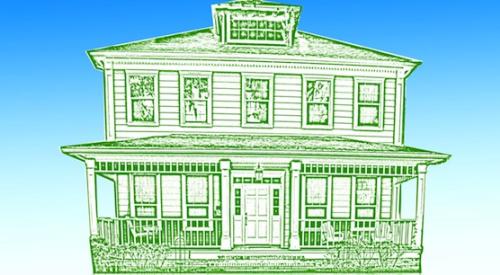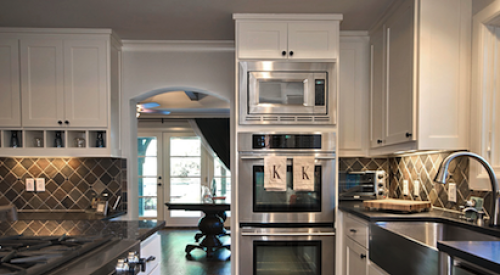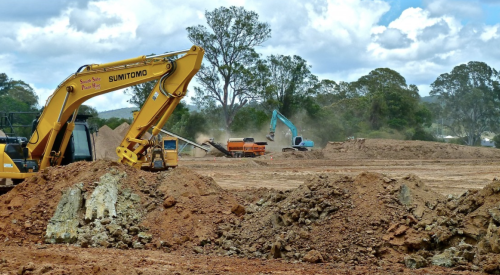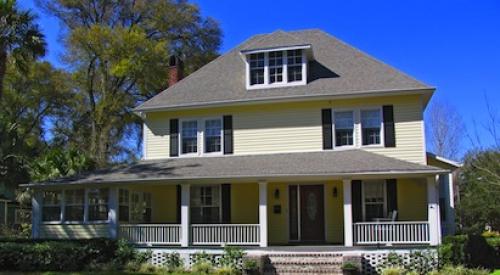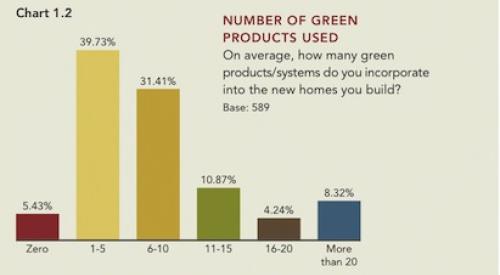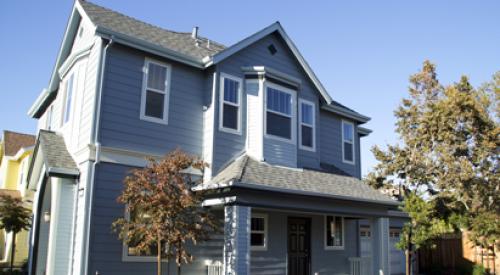Borrowing against the future has weakened the demand for homes over the next few years. Falling interest rates and creative financing allowed approximately 2 million more renters than usual to transition into homeownership. Rising home equity allowed millions more to move from their entry-level home to their dream home. Today, many renters are unable to buy a home and homeowners are content to stay in their existing home.
From 2001 to the present, we estimate there were 6.1 million new and existing home transactions in excess of what recent history suggests there should have been — nearly one year's worth of excess transactions. Over the long term, there has been an average of 4.9 transactions for every 100 households annually. Because people are more transient today, we believe the number should be closer to 5.6 transactions. Multiplied by the number of households in the U.S., this amounts to 6.5 million sales that should have occurred in 2006. In the last 12 months, there were actually 7.2 million sales.
The excess transactions stemmed from the following:
- BORROWED HOMEOWNERSHIP FROM THE FUTURE: During the recent falling interest rate environment, we dipped deep into the rental pool for qualified home buyers and borrowed from the future, adding more homeowners than the long-term trend would indicate. This has brought the U.S. homeownership rate to a record-high level of 69 percent, which we think is about five years ahead of schedule. Demographics play a long-term role in rising homeownership, but falling interest rates and creative financing were the primary drivers behind the most recent surge.
- INVESTOR PURCHASES: Speculative investor activity ramped up during the early part of the decade. A National Association of Realtors survey suggests that 28 percent of all resale home sales in 2005 went to investors, and another 12 percent were to second-home owners. Investors' purchases drove up price appreciation to record levels in many markets and gave them incentive to flip properties multiple times, also increasing the level of transactions.
- MORE MOVE-UP ACTIVITY: Rising prices also increased the amount of equity that homeowners had in their current homes, giving them the economic means to "move up" quicker than they might have otherwise or to purchase a second home, borrowing from future demand in the process.
- VACANT HOMES: The number of vacant homes — including unoccupied homes and seasonal/second homes — constructed has increased substantially. There are 2.3 million more vacant units today than there were four years ago, which is about 1 million more than we think should have been created. Not all of these count as transactions, but this category can't be ignored.
For the housing market to stabilize, these excess transactions need to burn off. The combination of strong job growth, slowing permit activity and adjusting prices that we are experiencing now will help bring the transaction levels back to equilibrium. We anticipate that sales volumes could correct another 30 percent, however, because of the excesses that were created recently.
Don't throw in the towel. This is all part of the cyclical business we live in. The harder the market falls, the sooner that conditions will improve. The best managed and best capitalized companies in the industry will survive and prosper.
 |
| EMPLOYMENT | AFFORDABILITY | PERMITS | |||||||||
| 1-Year Payroll Employment Growth | 1-Year Growth Rate | Unemployment Rate | Median Resale Home Price | Resale Housing Costs as % of Income* | Housing Cycle Barometer** | 12-Month Single-Family Permits | 1-Year Single-Family Growth | 12-Month Total Permits | Total Permits as % of Peak Permits*** | ||
| 1 | Atlanta | 48,700 | 2% | 4.5% | $175,537 | 24% | 3.8 | 57,672 | -3% | 71,440 | 95% |
| 2 | Houston | 72,700 | 3% | 4.5% | $144,600 | 25% | 5.1 | 55,266 | 11% | 68,245 | 91% |
| 3 | Phoenix | 94,500 | 5% | 3.4% | $256,000 | 39% | 6.3 | 45,661 | -24% | 53,759 | 77% |
| 4 | Riverside-San Bernardino | 28,000 | 2% | 4.4% | $385,000 | 64% | 8.9 | 36,086 | -20% | 40,836 | 71% |
| 5 | Dallas | 50,800 | 3% | 4.5% | $153,800 | 26% | 4.0 | 30,476 | -2% | 38,860 | 53% |
| 6 | Chicago | 43,600 | 1% | 3.5% | $240,000 | 37% | 5.3 | 25,123 | -13% | 43,141 | 98% |
| 7 | Orlando | 37,200 | 4% | 2.8% | $245,000 | 41% | 7.0 | 24,827 | -6% | 32,404 | 90% |
| 8 | Las Vegas | 42,700 | 5% | 4.0% | $307,000 | 50% | 7.3 | 23,970 | -20% | 36,441 | 93% |
| 9 | Tampa | 27,200 | 2% | 3.0% | $194,800 | 36% | 6.3 | 20,860 | -22% | 25,316 | 67% |
| 10 | Charlotte | 12,200 | 2% | 4.5% | $158,500 | 25% | 1.2 | 20,590 | 10% | 24,505 | 100% |
| 11 | Austin | 18,100 | 3% | 3.7% | $173,800 | 31% | 5.2 | 18,914 | 16% | 26,780 | 100% |
| 12 | Washington D.C. | 54,300 | 2% | 2.9% | $396,101 | 47% | 8.1 | 17,459 | -25% | 26,569 | 70% |
| 13 | Fort Worth | 14,900 | 2% | 4.5% | $113,800 | 20% | 5.0 | 17,346 | 0% | 21,411 | 56% |
| 14 | Fort Myers | 9,000 | 4% | 2.5% | $250,000 | 42% | 6.4 | 16,182 | -30% | 21,500 | 72% |
| 15 | San Antonio | 15,600 | 2% | 4.4% | $136,900 | 28% | 5.1 | 14,320 | 0% | 20,233 | 91% |
| 16 | Denver | 20,500 | 2% | 4.2% | $240,000 | 37% | 5.6 | 14,315 | -20% | 18,747 | 66% |
| 17 | Nashville | 18,200 | 2% | 3.5% | $158,800 | 28% | 5.2 | 14,040 | 0% | 15,538 | 85% |
| 18 | Raleigh-Cary | 20,900 | 4% | 3.3% | $185,000 | 28% | 2.1 | 13,540 | -3% | 17,295 | 100% |
| 19 | Minneapolis | 36,500 | 2% | 3.3% | $250,000 | 35% | 6.6 | 13,012 | -26% | 17,111 | 61% |
| 20 | Jacksonville | 11,600 | 2% | 3.1% | $188,000 | 30% | 5.7 | 12,768 | -32% | 18,102 | 71% |
| Sources: Bureau of Labor Statistics; U.S. Census Bureau through the month ending October 2006; John Burns Real Estate Consulting. Data on all markets available at www.realestateconsulting.com *Proprietary affordability scale with 0 meaning most affordable time since 1983, 5 meaning median affordability, and 10 meaning least affordable time. **Annual Mortgage Costs +1/7th of the downpayment divided by income. *** Peak activity since 1985. | |||||||||||
| Author Information |
| John Burns helps many of the largest companies in the industry with strategy and monitoring market conditions. He can be reached at jburns@realestateconsulting.com. |
